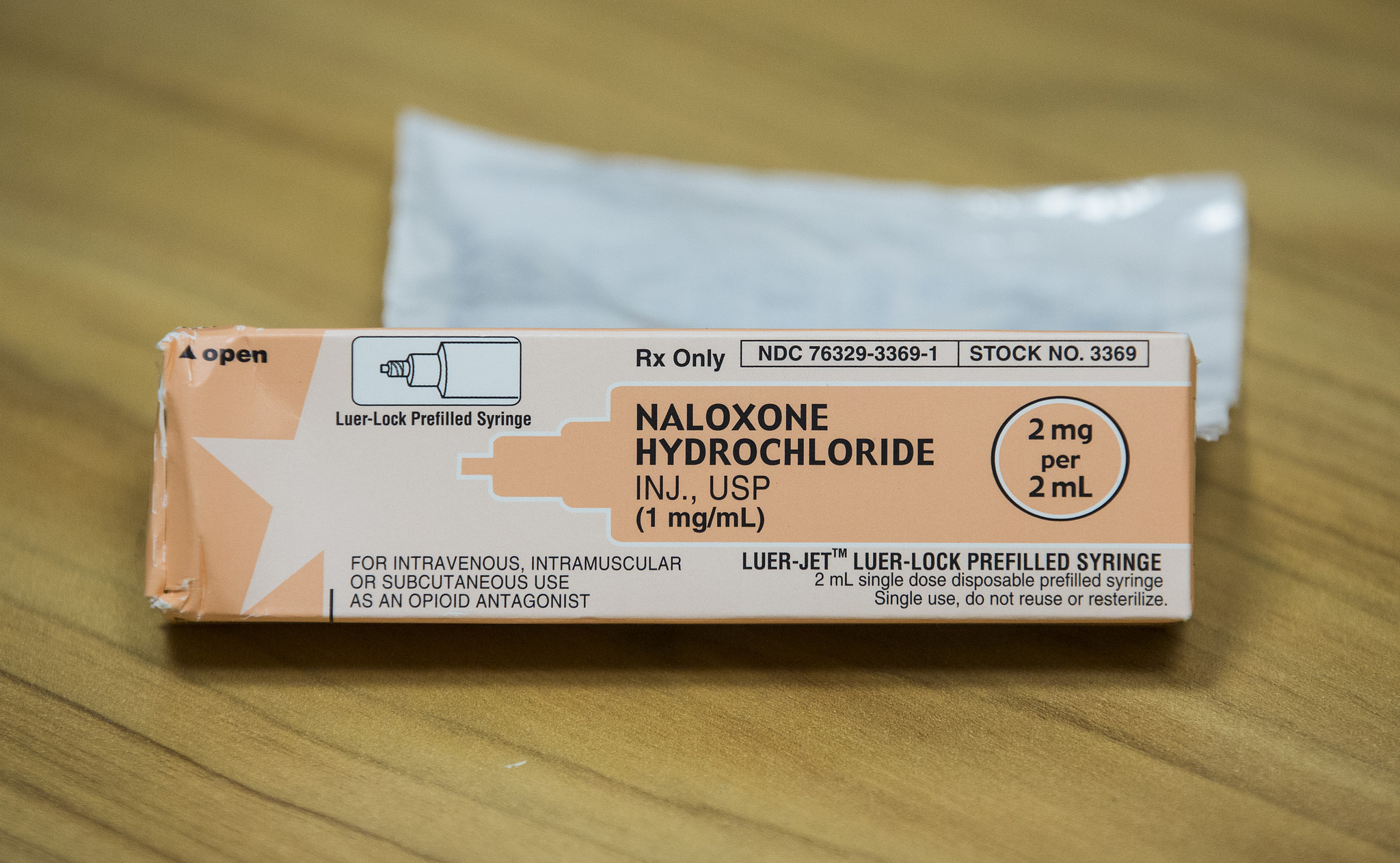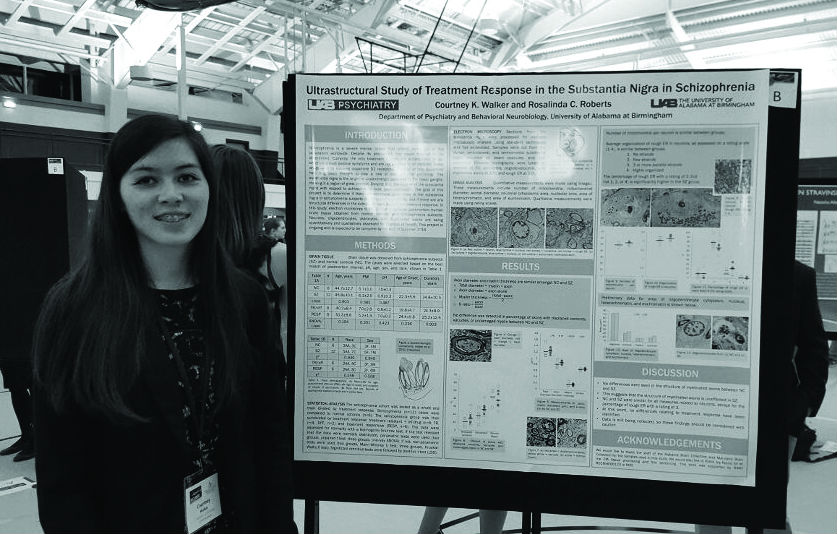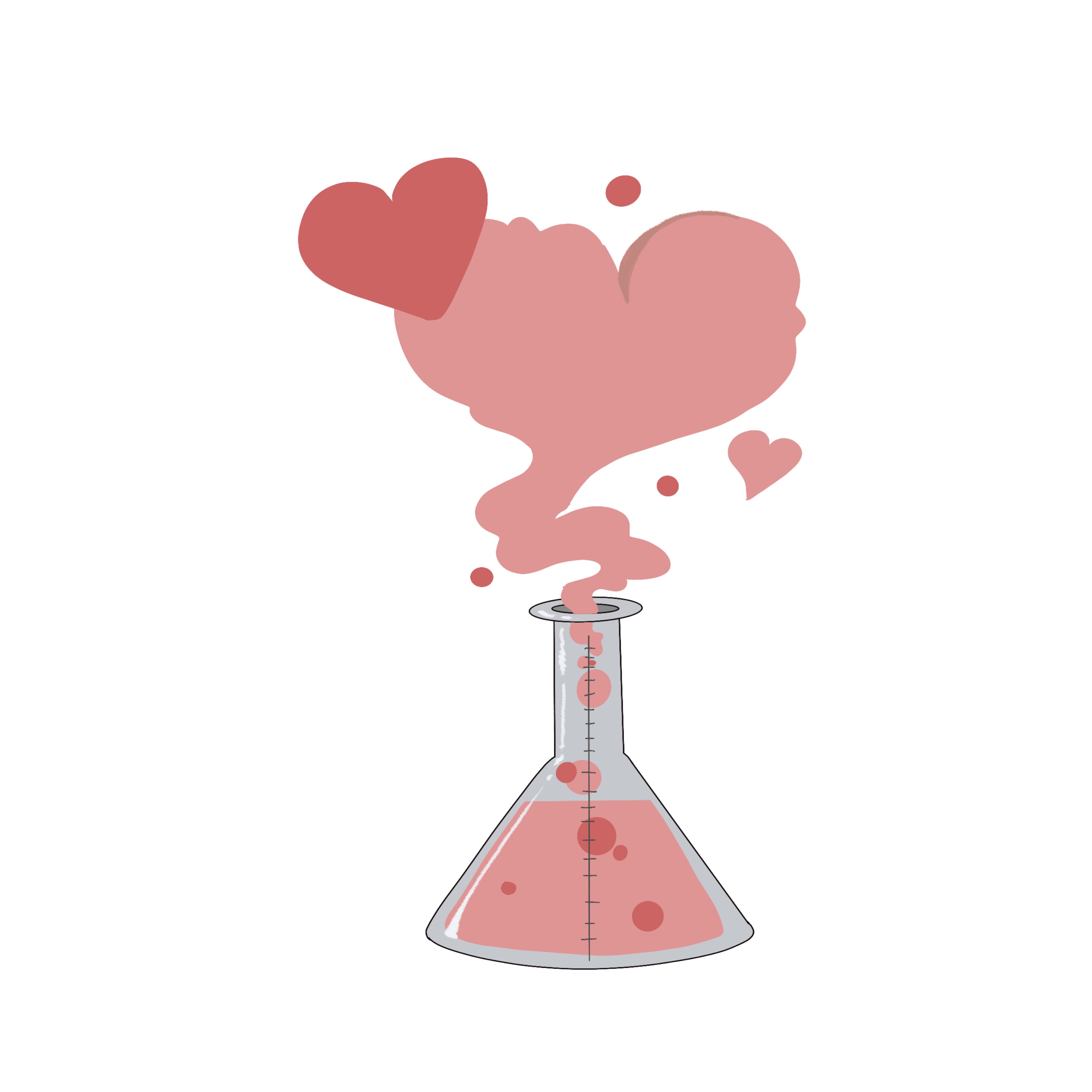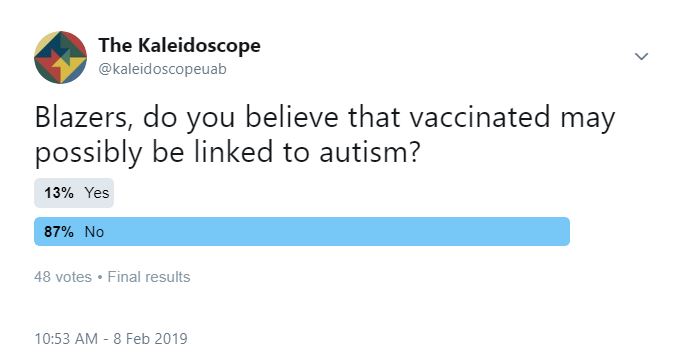-
Chemistry of love
Chemistry of love
What really happens when enamored
Illustration by Savannah Donald/Staff Illustrator
Whitney Sides
Blazer News Reporter
whitsides@uab.edu
When falling in love, analyzing the flow of neurotransmitters may be the last thing on one’s mind. However, its role is central when falling head over heels for someone.
One of the first researchers in this area was Helen Fisher, biological anthropologist and professor at Center for Evolutionary Studies at Rutgers University. She wrote a study where she investigated the brain circuitry of romantic love. She dissected the concept of love into three stages: lust, attraction and attachment.
According to Fisher’s research, lust comes first. It is a heady mix of the sex hormones testosterone and estrogen pumped directly from the amygdala into the genitals.
“[Passionate love] is really is a complex mix,” said Douglas Fry, Ph.D, chair of the Anthropology department at UAB. “Equal parts epigenetics and environment.”
Fry’s recent research has followed both violent behavior as well as peace across cultures. He said that the association of passion and romance to lasting love in Western culture is not shared in every society. Second, comes attraction. According to the Neuroendocrinology of love, a study done by the National Institute of Health, this stage is mediated by hormones of stress and reward, which results in an increased heart rate.
This mix is meant to solidify bonds between mammals. Oxytocin, specifically, is released in large amounts to new mothers, increasing chance of survival for all members of a family unit. The process of imprinting combines both a person’s experiences and their own personal chemistry, the study said.
Fry said that placing value in attraction when seeking a long-term partner is a relatively new concept. The final stage is attachment. In this phase, the initial stress that comes with lust and attraction is fulfilled in the stability of a deeper relationship. Repeated positive experiences, such as pair-bonding, can imprint upon the emotional memory of a person.
“In my area of research, emotional memories are very strong and play an important role downstream in having a lasting effect on your DNA,” said Farah Lubin, associate professor in the Department of Neurobiology at UAB, who specializes in memory research.
Her work in the area of epigenetics focuses on how sensory input helps to encode neurons for memory, providing lasting change in your genetic code. According to Lubin, emotional sensory input helps to encode neurons for persistent change in a person’s DNA. This means emotions can possibly be imprinted in the DNA if they are constantly recalled.
“The human body is wild,” Lubin said. “Loving memories are powerful but what’s significant to you might not be as significant to me. People are different. A single rose could mean the world to you but if in my experience I get roses every day, it might not imprint as much.”
Lubin said that we have somewhat control over our emotional memory.
“Emotional memories are some of the strongest,” Lubin said. “If you have an emotional memory, sure it might come back but it will also go away if you don’t constantly think of it.” -
Crowdfunded study saves nine lives, more to come
 Naloxone is a medication that blocks the effects of opioids such as heroin and similar prescription drugs. Image available for reuseMark Linn - Copy Editor
Naloxone is a medication that blocks the effects of opioids such as heroin and similar prescription drugs. Image available for reuseMark Linn - Copy Editor
copy@insideuab.com
A crowdfunded study that began in 2015 to provide life-saving opioid overdose reversal medication to members of the community has already saved nine lives.
-
Measles outbreak raises discussion on vaccination
Measles outbreak raises discussion on vaccination
Allison Brown
CityLifestyle Reporter
browna17@uab.edu
According to Centers for Disease Control and Prevention (CDC), 10 states have reported cases of measles so far in 2019. There have been three in Georgia, all in the Atlanta area. New York and Washington have also declared a state of emergency due to the measles outbreak.Mayo Clinic defines measles as a childhood infection caused by a virus. Measles can be serious and even fatal for small children.
The CDC declared measles eliminated from the United States in 2000. The organization credits this to a successful vaccination program. However, numbers have risen again, and the number of measles cases tripled between 2017 and 2018, CDC website.
“It’s sad because it’s so predictable,” said David Kimberlin, M.D., Co-division director in pediatric infectious diseases.
According to Kimberlin, there are many misconceptions surrounding vaccinations.
“Vaccines do not cause autism,” Kimberlin said. “All reasons supporting these claims have been disproven. It’s like whack-a-mole, you knock one [theory] down, and another pops up.”
In response to the recent outbreaks, a new law being pushed on the federal level has been proposed that will require everyone to receive certain vaccines regardless of personal or philosophical reasons according to the American Council of Science and Health.
Alabama is one of the 18 states that exempt students from receiving vaccinations for these reasons. All parents have to do is sign a waiver.
Julia Homola, a sophomore in immunology, said that she noticed the anti-vaccination trend a few years ago when she was in high school. According to Homola, her high school located in Chicago, had mumps outbreak due to lack of vaccination. Four to seven people were infected Homola said.
“They told anyone who wasn’t vaccinated to stay home for six weeks,” Homola said.
To ensure all faculty and staff on campus are protected, UAB requires students to receive two doses of MMR vaccine (for measles, mumps and rubella), a tetanus vaccine, varicella vaccine (for chickenpox or shingles), a meningococcal vaccine and tuberculosis screening, according to Carol Griggs, practice manager for the student health services.
Griggs said that UAB’s immunization policy only allows medical exemptions. This means students cannot be exempted because of their religious or philosophical beliefs.
It is those who are not vaccinated, or who choose to not vaccinate their children, who are at risk.
Kimberlin said that those who are unvaccinated will eventually be affected.
“[Measles] will find the dry leaves, if you will, and start a fire,” Kimberlin said.
-
Summer research success stories
 Courtney Walker. Photo by Surabhi RaoWallace Goldin - Contributor
Courtney Walker. Photo by Surabhi RaoWallace Goldin - Contributor
wsgoldin@uab.edu
Students have the opportunity to become a part of a groundbreaking research with faculty members as well as to lead their own studies, and can gain academic credit both ways. UAB has a tradition of enabling and encouraging undergraduate research, and it has become a staple of presentations during student recruitment season. This provides a dynamic of cooperation and individual competition that is found in careers in research and graduate programs alike, but that is not necessarily expected in undergraduate academia.
-
UAB researchers tackle concussion diagnosis and treatment
 Screenshot from an informational video by UAB News about the research surrounding concussions. (Video by UAB News).Mark Linn - Staff Writer
Screenshot from an informational video by UAB News about the research surrounding concussions. (Video by UAB News).Mark Linn - Staff Writer
quiaego@uab.edu
The risk of concussions in heavy contact sports, particularly football, is increasingly being brought to the public’s awareness. However, there are no medical tests to reliably diagnose concussions and few methods of treatment.

